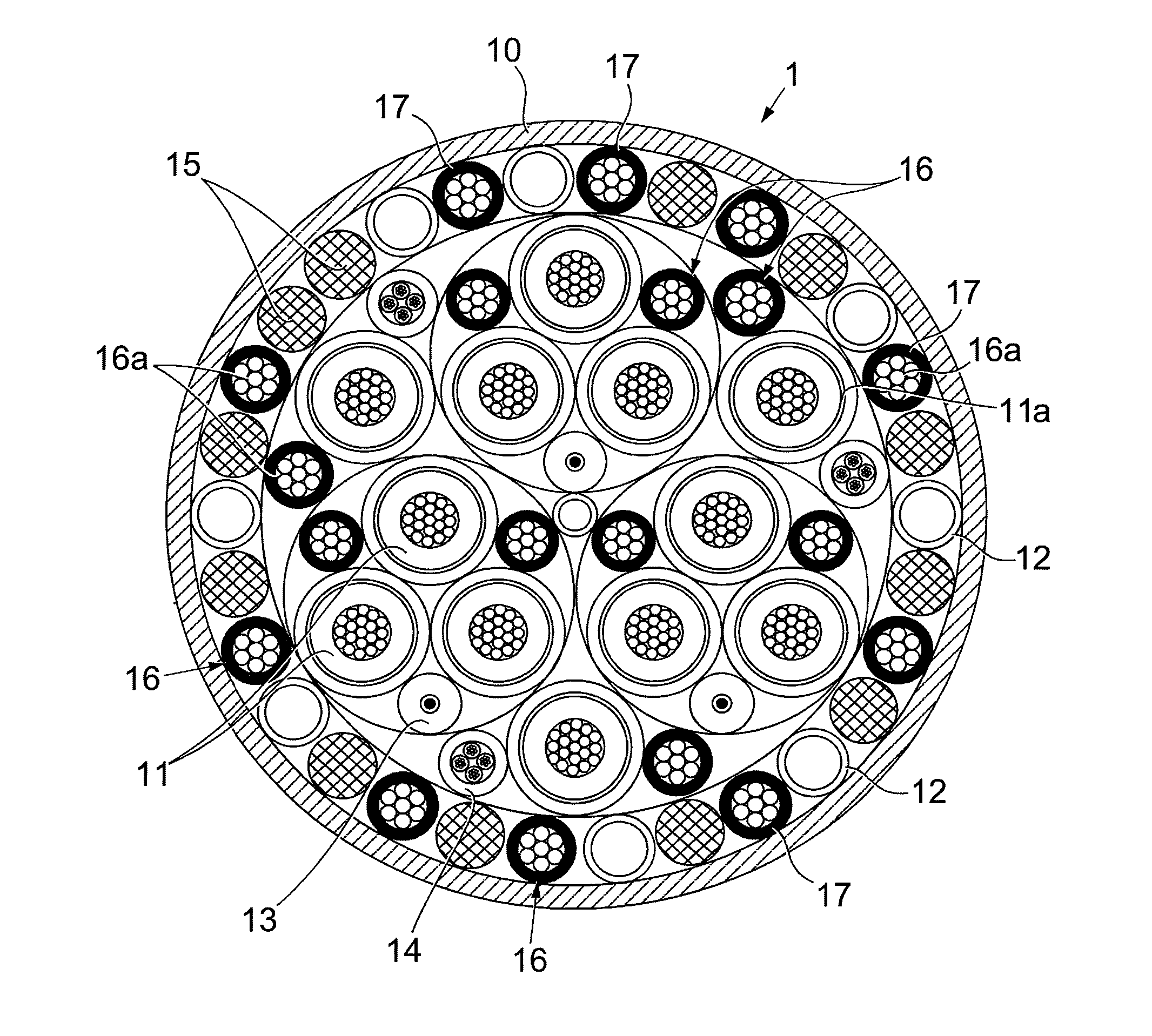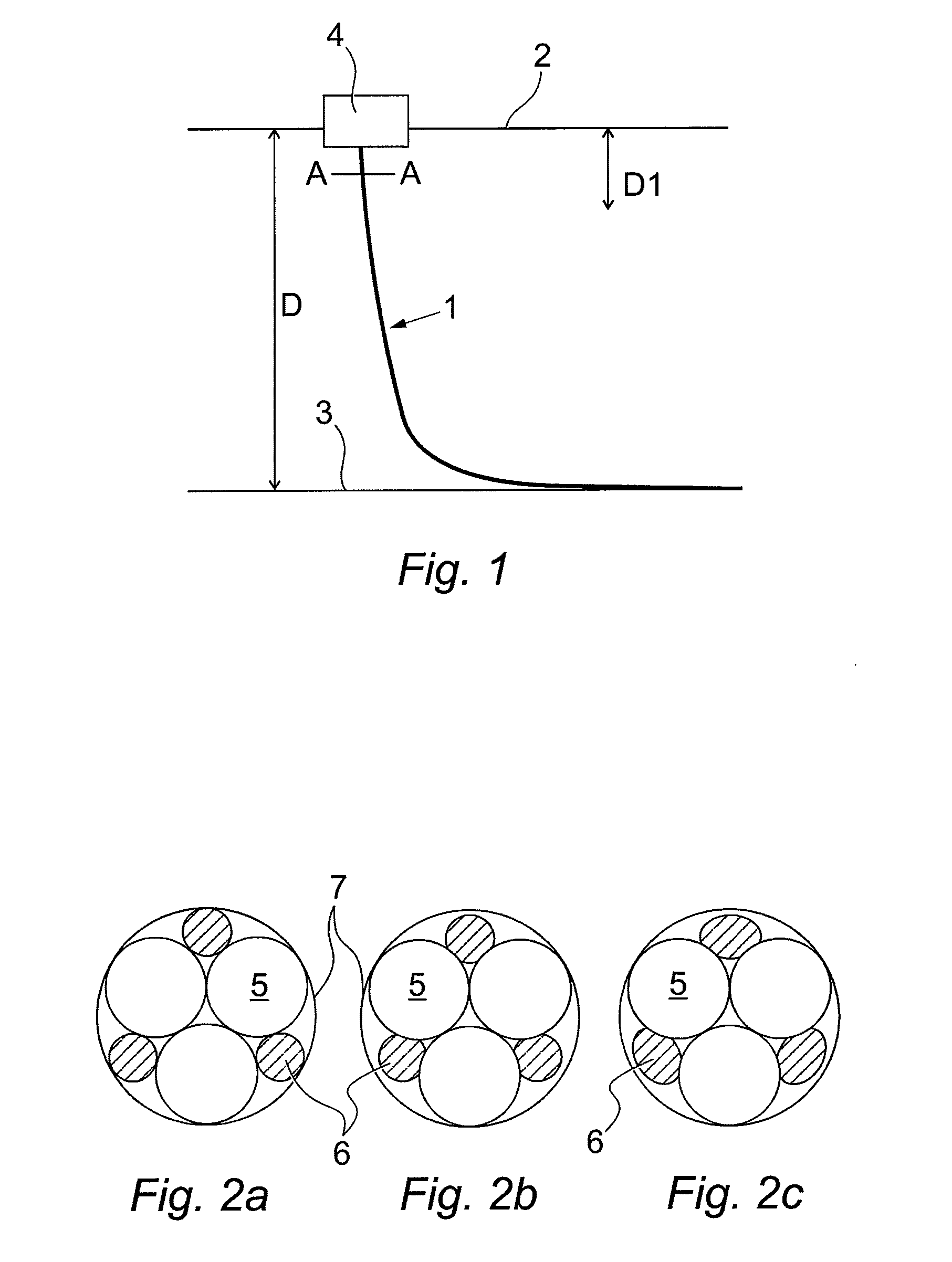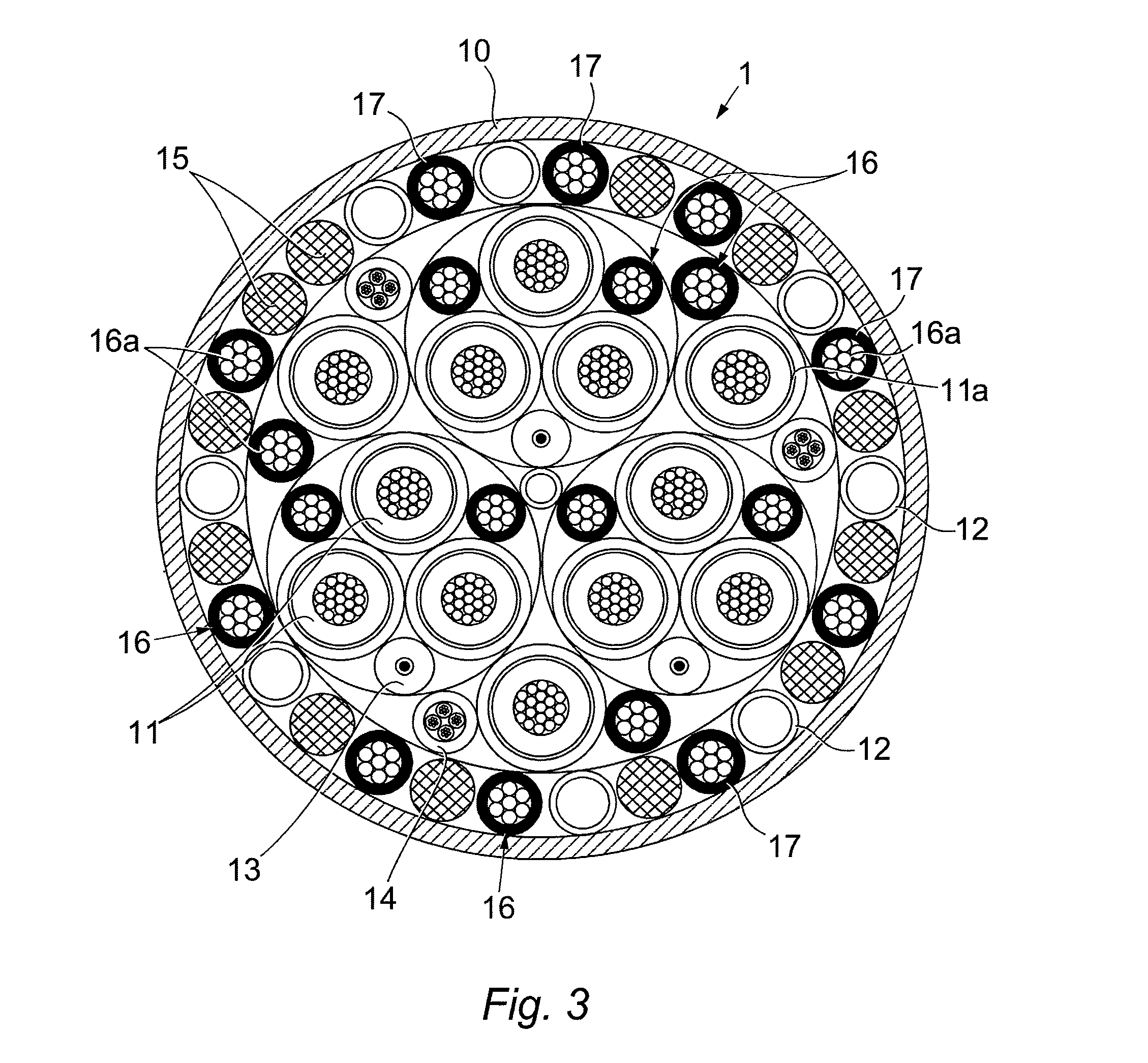Umbilical
a technology of umbilical and stent, which is applied in the field of umbilical, can solve the problems of not solving the problem in considerable extended lengths, increasing the weight of the stent, so as to reduce the heat affected zone, reduce the risk of overheating the stent, and reduce the tube diameter
- Summary
- Abstract
- Description
- Claims
- Application Information
AI Technical Summary
Benefits of technology
Problems solved by technology
Method used
Image
Examples
Embodiment Construction
[0047]Referring to the drawings, FIG. 1 shows a schematic diagram of a first umbilical 1 in catenary configuration between a floating production unit 4 at a sea surface 2, or commonly at the ‘topside’, and a sea floor 3 or sea bed, with a depth D therebetween.
[0048]As is known in the art, the highest tensile and bending stresses are in the top section in the umbilical 1 as it approaches the floating production unit 4, shown in FIG. 1 by the section D1 of depth D. Traditionally, where the depth D is significant (such as >2000 m), load bearing members such as steel rods are provided along the whole length of the umbilical, generally to maintain ease of regular and constant manufacture.
[0049]However, whilst such load bearing members assist the tensile and bending stresses in the section D1, they become less useful, and therefor disadvantageous in terms of weight and cost, as the umbilical 1 continues towards the sea floor 3. The longer the umbilical, the greater the disadvantages are.
[...
PUM
| Property | Measurement | Unit |
|---|---|---|
| tensile strength | aaaaa | aaaaa |
| depth | aaaaa | aaaaa |
| depth | aaaaa | aaaaa |
Abstract
Description
Claims
Application Information
 Login to View More
Login to View More - R&D
- Intellectual Property
- Life Sciences
- Materials
- Tech Scout
- Unparalleled Data Quality
- Higher Quality Content
- 60% Fewer Hallucinations
Browse by: Latest US Patents, China's latest patents, Technical Efficacy Thesaurus, Application Domain, Technology Topic, Popular Technical Reports.
© 2025 PatSnap. All rights reserved.Legal|Privacy policy|Modern Slavery Act Transparency Statement|Sitemap|About US| Contact US: help@patsnap.com



